An outdoor pastime for everyone as well as a professional sport where light balls fly back and forth at incredible speeds. Table tennis entered the fine arts as a parallel for interpersonal communication. Similarly to the tennis court, this sport is typical for the continuous movement there and back, the same way two individuals would lead a conversation. In ping-pong, these two sides are separated by the physical object of the table, attracting artists for its various uses.
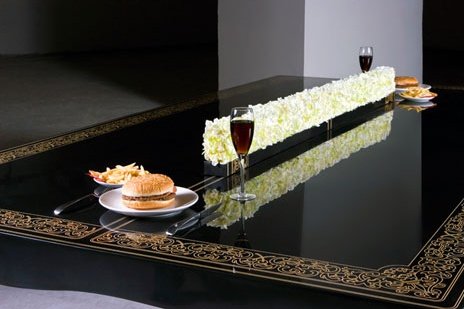
One example of this symbolic use is the Ping-pong Dining Table by Singaporean artist Hunn Wai. After all, table tennis originated when people use the dining tables at home for the game. The piece references the sport’s beginnings in Victorian England while following the official material and size requirements. Only where traditional ping-pong tables have their lines, the glossy black panel is decorated with golden rococo patterns. The net is replaced by a large flower arrangement which gives the object a festive character.
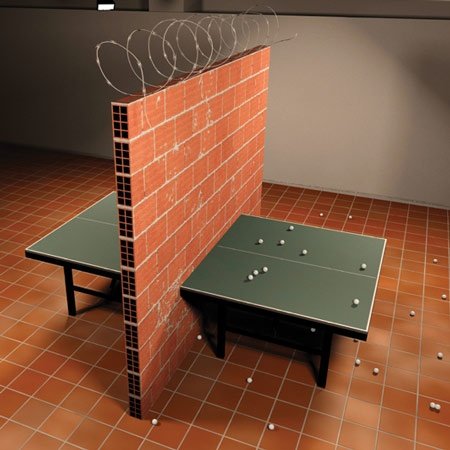
Portuguese artist Carlos No sees the net as a borderline. His table, titled Intifada is separated by a wall topped with barbed wire. The author himself has stated that this site-specific installation points to the issues surrounding physical borders, whether in terms of personal or societal boundaries. According to him, the work questions ideas like area, border and exclusion and calls attention to issues of segregation, intolerance and a lack of communication between various groups of people with diverging opinions.
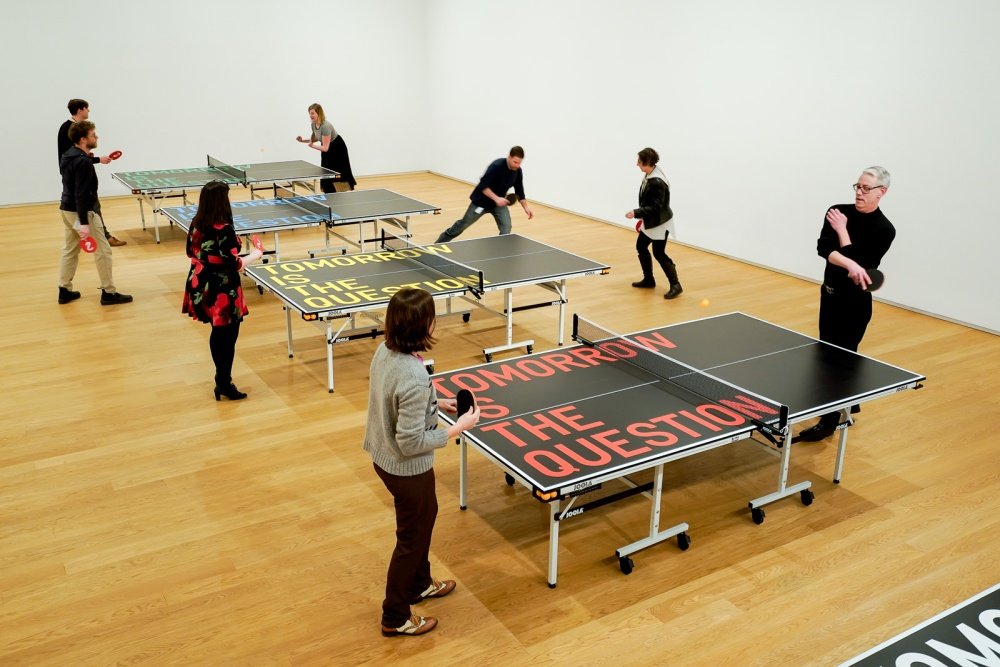
The ping-pong table attracts active audience participation
The Thai-born artist Rirkrit Tiravanija actively involved the audience in his ping pong project in the installation called Tomorrow is the Question. He placed tables inscribed with this quote in the space, allowing the audience to play if they want. Tiravanija is interested in the experience of visitors, their relationship to art and their ability to respond to an unexpected situation.
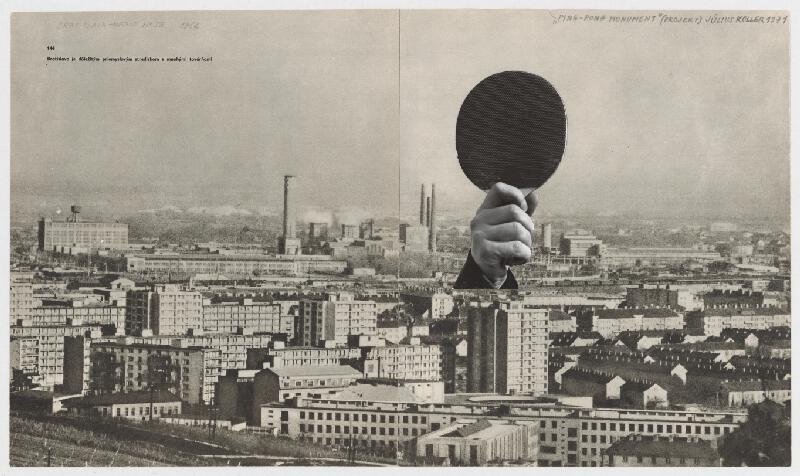
In this way, he continued the practice of Slovakian artist Július Koller who in 1970 in Bratislava installed ping-pong tables in the gallery space embellished with flags and sports symbols and allowed the visitors to play in this non-traditional environment. This forefather of Slovak conceptual art attempted to challenge the cultural context of his surroundings by placing this form of everyday pastime into an unconventional space. By using this sporting parallel he also drew attention to the importance of fair play which was a very current topic in normalisation-era Czechoslovakia. Ping-pong was a returning theme for Kollár which he captured in various techniques, like the events themselves or collages and photographs.
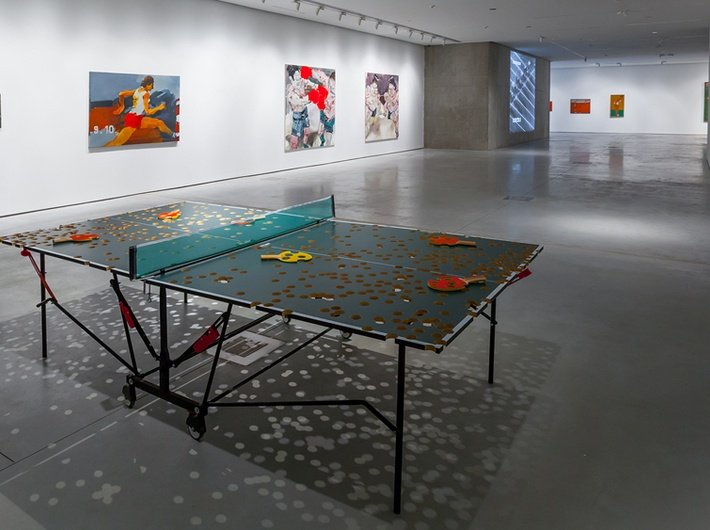
Tracing the ball’s trajectory and expanding the possibilities of the game
Contemporary French artist Richard Fauguet traces the trajectories of a ping-pong ball during an imaginary game in his untitled work from 2004. The resulting sculpture records all phases of movement in a single moment. It resembles the technique of chronophotography or some of the futurist attempts of depicting movement. He later returned to the topic of table tennis with another ping-pong table, this time each contact of the ball was marked by a hole in the surface. The table that almost looks as if it has been riddled with bullets was exhibited, for example, at the Sport in Art exhibition in the Mocak Muzeum of Modern Art in Krakow.
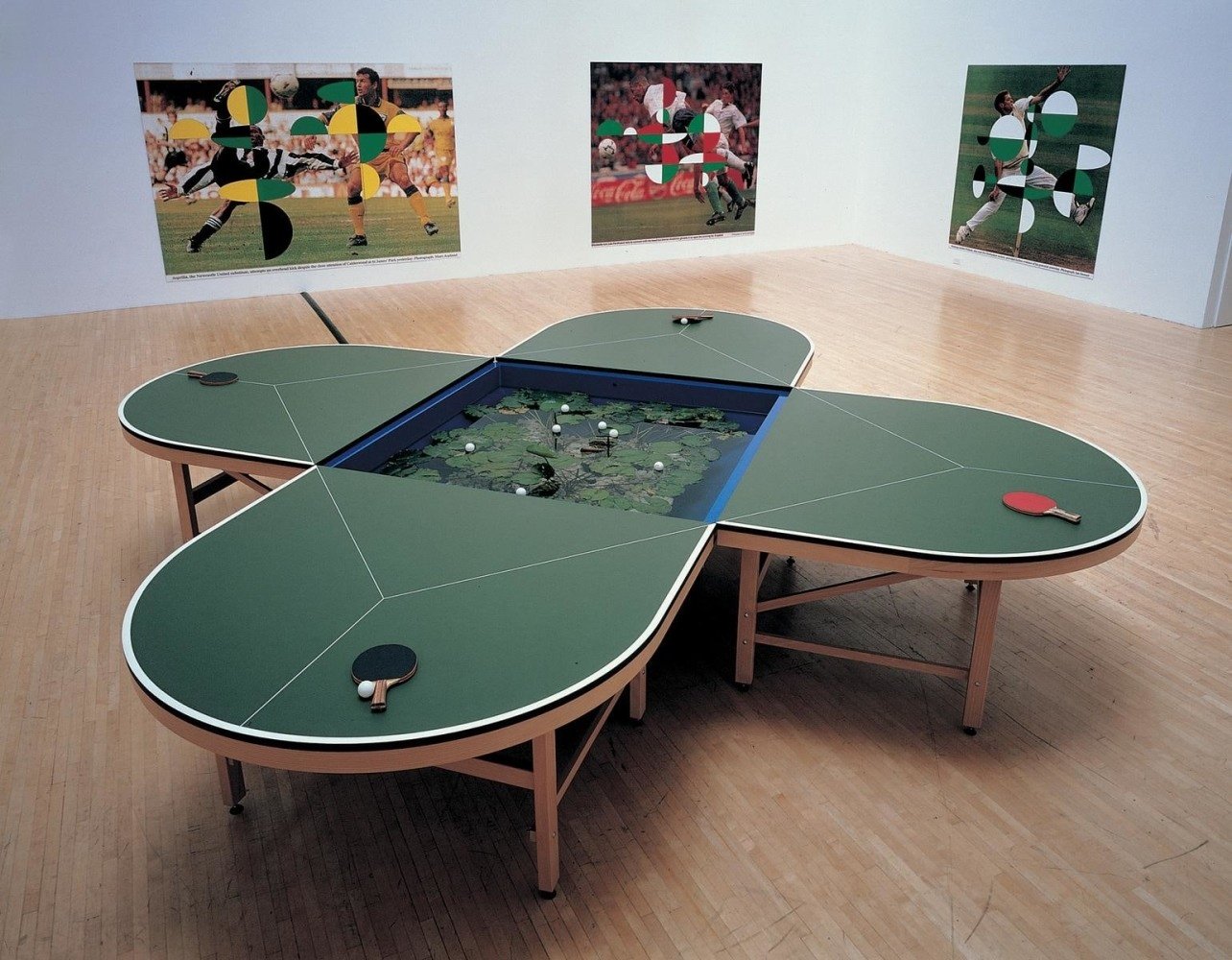
Gabriel Orozco also created a ping-pong table, this time for four players. The object, titled Ping-pond, is formed by four wings of a ping-pong table placed in a cross with a lilypad pond placed at the centre, separating individual wings. The piece follows an idea often present in his work where he adjusts an everyday object in a way that brings the spectator to think and consider commonly overlooked problems.
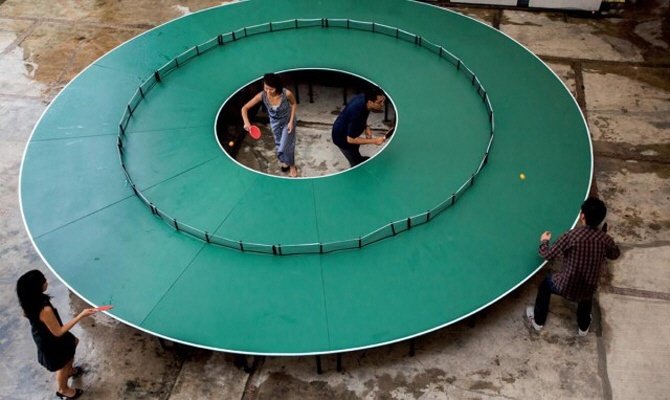
A round table by Singaporean performer and art pioneer Lee Wen opens up to even more players. The artist explores the relationships between an individual and community and perceives table tennis as constant communication. By using a round table with space at the centre he opened this popular sport to a wide community. However, not all players have the same experience. The ones at the centre have to constantly turn while other interested parties may gradually approach and leave the outside edge. Wen first introduced this table in 1998 and later it has been exhibited, for example, at the Art Basel festival in Hongkong.
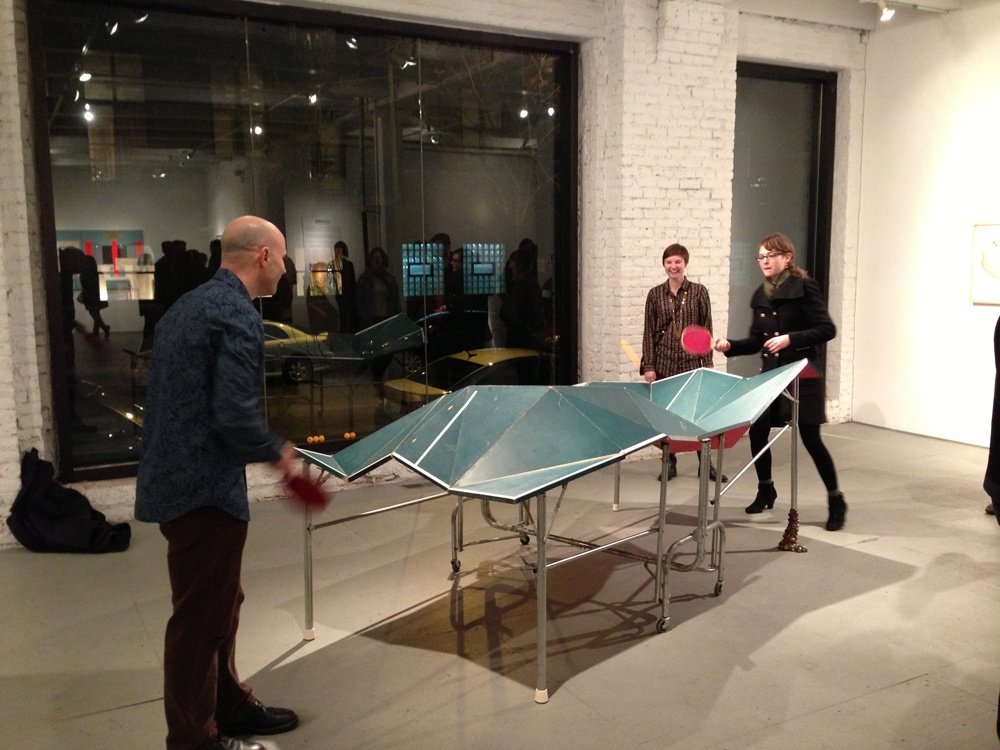
Balls scattered in all directions like the thoughts of people who do not understand each other
Balls fly in all directions at the table designed by American sculptor and gallerist Graeme Whyte. The artist, known for his ironic sense of humour, has broken the surface of the table into such a complex shape that, despite having the option, the audience can barely manage to play a single exchange. In a work entitled Venue for Advanced Conflict Resolution (Battle of the Gods), he addresses the issue of communication and conflict resolution, which is as difficult as the game on his "enhanced" table.
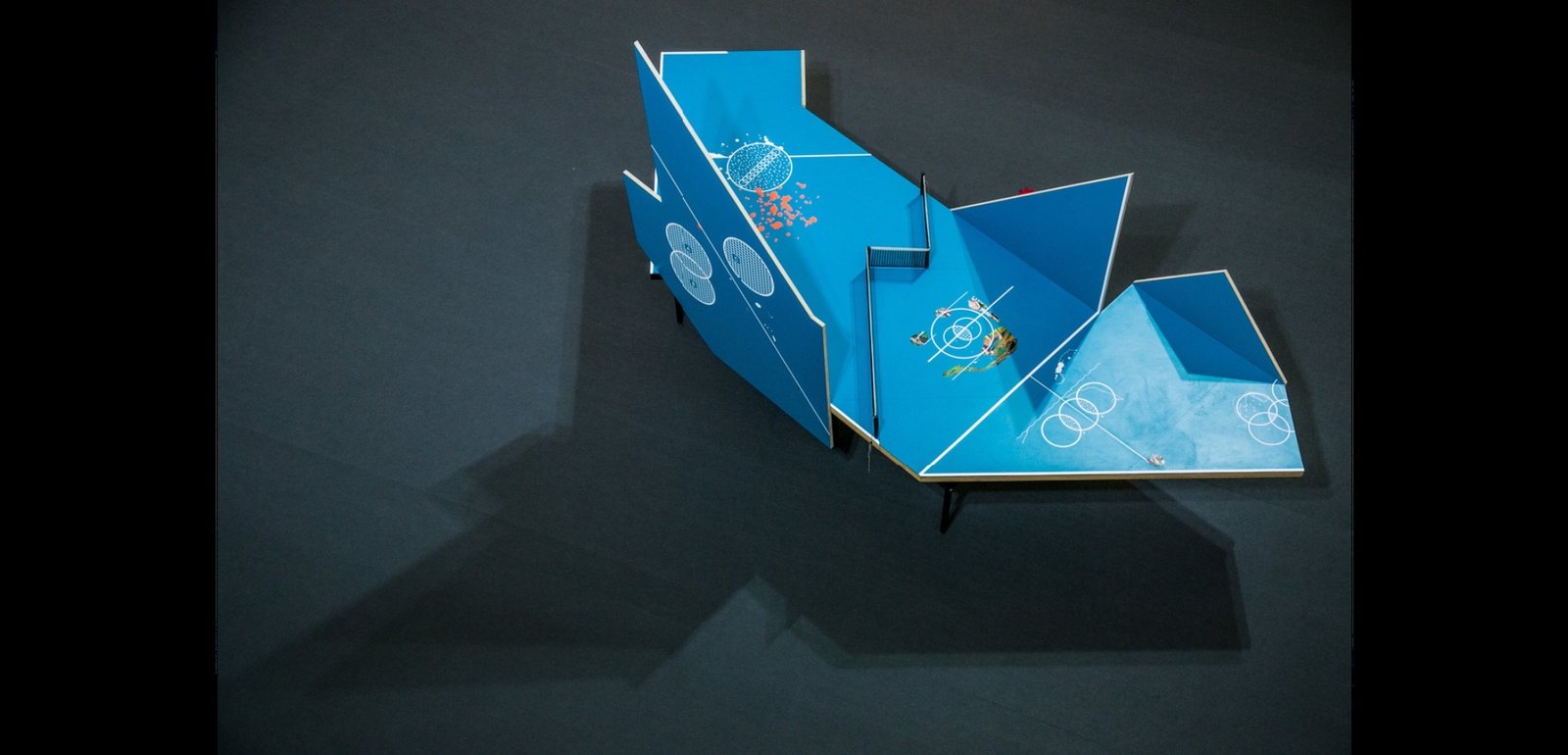
No less complex is the table by the Indian duo Thukral & Tagra, which is designed as a kind of arena in which the ball can bounce to any side. As with most of the darkly humorous works of the creative duo Jiten Thukral and Sumir Tagra, the viewer is entertained, but at the same time is being made aware of the problems of the contemporary world.
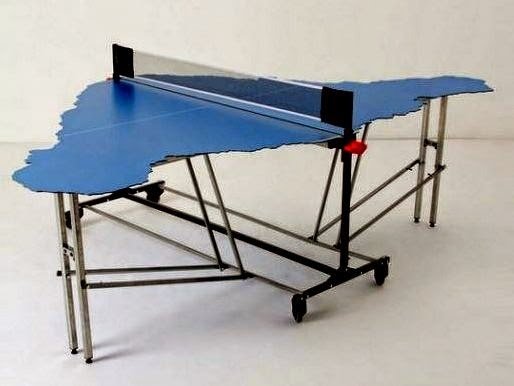
A table by Cyprien Chabert in the shape of Easter Island draws attention to topics of ecology. For him, it represents a kind of lost paradise swallowed up by modern society, which today only exists in our imagination. The work, called Easter Island Ping Pong Table, was created by carving an ordinary sports table into the geographical shape of the island.
Table tennis attracts designers
The table tennis table was also designed by Finnish designer and 3D printing pioneer Janne Kyttanen, who is himself an active athlete and professional squash player. Using the 3D printing method, he created not only an elegant table but also bats and a ball, turning ordinary sports equipment into a design piece.
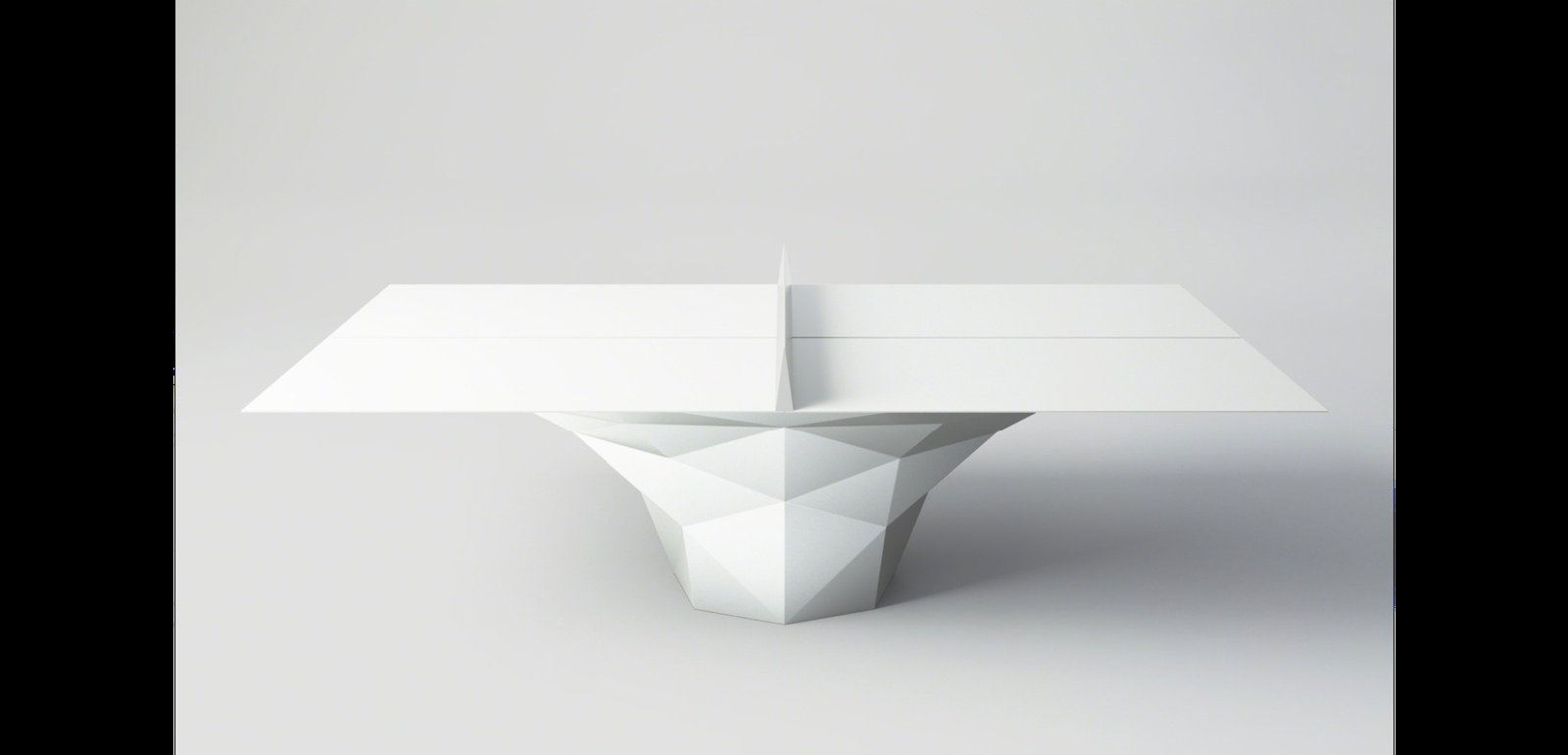
There is even an entire brand called Art of ping pong dedicated to the artistic rendering of ping-pong tables. Not only do they design beautiful ping-pong tables that become statement design pieces in their owners’ homes but they also collaborate with many artists such as Camille Walala, Anthony Burrill, Noma Bar, Supermundane, Hattie Stewart, Jean Jullien, Thierry Noir, Mr Doodle, David Shillinglaw, Morag Myerscough, Jake & Dinos Chapman, Alan Kitching, Ryan Gander, creating works inspired by table tennis which are then presented as part of charity events.





